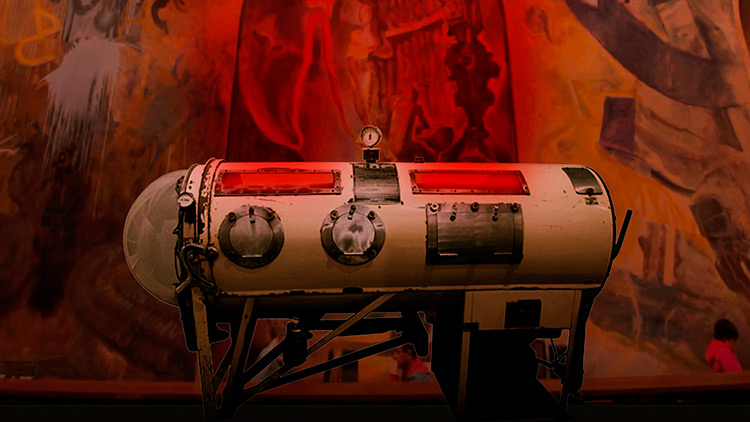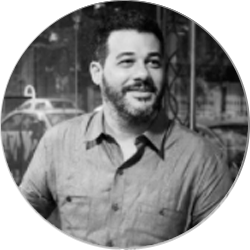
Marcelo Schuster / Argentina
LAS REVOLUCIONES ELEMENTALES
Instalación – Filux Lab
BIBLIOTECA MIGUEL LERDO DE TEJADA – SHCP
Rep. De El Salvador no. 49
¿Cómo hablar de la revolución después de la revolución? Para Hannah Arendt, el siglo XX fue un siglo de revoluciones, ¿cómo ponderar el siglo que le sigue -en apenas veinte años- cuando se ha declarado, gracias al triunfo de la globalización capitalista, el acabamiento -o el fracaso histórico- de los desenlaces revolucionarios?
La misma Arendt ya nos hablaba de “repúblicas elementales” (como de ese poder constituyente que preservaba la revolución en medio del statu quo del Estado), que parece extraer de la reflexión práctica del activismo de Rosa Luxemburgo. Hannah Arendt y Rosa Luxemburgo, la anticomunista y la antiimperialista, a pesar de sus posturas ideológicas públicas, acuerdan ambas en relevar la materia originaria de la revolución, que se sustrae de sus condicionamientos históricos. Dicho de otra manera, aunque la revolución fuera sofocada por el Partido, o por la democracia electoralista (en sus versiones liberal o socialista de corte historiográfico), hay, de todos modos, una potencia de espontaneidad cuasi-organizativa disponible a visibilizarse. Yo llamo a estos sustratos no institucionalizables por la historia, a estas retenciones reactivables por la aleatoriedad de los futuros, a estas figuras que resisten, ayer al Estado, hoy a la imposición global, “las revoluciones elementales”.
¿Cómo describir una revolución elemental? Hay que encontrar un objeto-fósil, un aparato ya extinto -a tono con las declaraciones apocalípticas sobre la revolución- que desmienta no sólo su final anunciado, sino que además tire abajo su concepto. Las revoluciones no son “pasados históricos” -no son representaciones temáticas del accionar político-, sino oportunidades técnicas de revivir cuerpos (cadáveres, máquinas, cementerios) y dotarlos de una acción de conjunto. En el objeto-fósil, la revolución elemental desafía la indiferencia -de un hecho abatido, terminado, extinto- y simula el despertar intermitente de su insistencia perentoria.
Pero ¿de qué objeto-fósil estamos hablando? De un pulmotor, de un invento médico norteamericano (de los años cincuenta) que encapsulaba a los cuerpos asfixiados en cabinas de resucitaje (al tiempo que en América estallaban las revoluciones contra el Imperio, en Guatemala, en Cuba, en Nicaragua, en Chile). Las revoluciones americanas, la mayor parte abatidas, los pulmotores, en cementerios médicos tras el fin de la epidemia en los Estados Unidos, ¿pueden aún cruzarse las historias y que tomemos el objeto-fósil médico para reanimar el discurso, contemporáneamente caduco, de las revoluciones?
“Las revoluciones elementales” en la Biblioteca Lerdo de Tejada
En los años ochenta, el artista Vlady pinta los murales de la Biblioteca Lerdo de Tejada, especializada en volúmenes de economía política. ¿Qué otro motivo pictórico podía entrar a tono con la secularización de un ex convento devenido archivo de ciencias económicas que el de las revoluciones? Vlady llamó a su obra monumental, La revolución y sus elementos. Se trataba de una transferencia, de una interpolación, llevar la revolución a los elementos sensibles de la pintura, a los cuerpos de las manchas que visibilizan nuestros actos profanos.
Yo llamo a la intervención del objeto-fósil pulmotor entre los murales de Vlady, “las revoluciones elementales” para entablar un diálogo entre el pintor y el filósofo interviniente, entre la revolución-tema del que se impregna la arquitectura -o la arquitectónica de lo político- y la revolución-sustrato con el que respira, cuando el arte quiere pasárselo por un mausoleo, por un repertorio muerto y estanco de hechos finiquitos del pasado.
How to talk about the revolution after the revolution? For Hannah Arendt, the XX century was a century of revolutions, how to ponder the following century in -20 years hardly- when thanks to the capitalist globalization’s triumph, it has been declared the end or -historical failure- of revolutionary outcomes?
Arendt herself had already spoken about « elementary republics » (as that constituting power that preserved the revolution in the midst of the State’s status quo), that seems to extract the practical reflection of activism of Rosa Luxemburgo. Hannah Arendt and Rosa Luxemburgo, the anticommunist and anti-imperialist, in spite of her ideological public postures, both agree on revealing the original matter of the revolution that is subtracted from its historical conditionings. Put in another way, even if the revolution was quashed by the Party, or by the electoral democracy (in its socialist or liberal versions of history graphic cut), there is anyway, a spontaneity power almost organizational available to be visible. I call these non-institutionalizable by history substrata, these retentions reactivatable by the randomness of the futures, these figures that resist, the State yesterday, the global imposition today, « the elementary revolutions ».
How to describe an elementary revolution? A fossil-object has to be found, a device already extinct –in tune with the apocalyptic declarations about the revolution- that denies not only its heralded end, but that it also brings its concept down. Revolutions are not « historical pasts » - are not theme representations of the political acting- but technical opportunities to bring bodies to life (bodies, machines, cemeteries) and to supply them with a joint action. In the fossil-object, the elementary revolution challenges indifference –of a depressed, terminated, extinct fact- and it simulates the intermittent awakening of its peremptory insistence.
But what fossil-object are we talking about ? A pulmotor, a north American medical invention (of the fifties) that encapsulated the asphyxiated bodies in resurrection cockpits of (when at the same time in America revolutions were breaking out against the Empire, in Guatemala, in Cuba, in Nicaragua, in Chile). American revolutions, most of them brought down, the pulmotors, in medical cemeteries after the end of the epidemic in the United States, can stories still be crossed and that we take the medical fossil-objects to revive the discourse that has contemporarily expired of the revolutions?
« The elementary revolutions » in the Lerdo de Tejada library.
During the eighties, Vlady the artist paints murals of the Lerdo de Tejada library, specialized in political economics. What other pictorial motifs could be in tune with the secularization of an ex convent that has become an economical science archive than that of the revolutions? Vlady named his monumental work, « the revolution and its elements ». It was about transference, of an interpolation, taking the revolution to the sensitive elements of painting, to the bodies of the spots that visualized our profane actions.
I call the intervention of the fossil-object pulmotor between the murals of Vlady, « the elementary revolutions » to start a dialogue between the painter and the intervening philosopher, between the revolution-subject of which the architecture is impregnated –or the architecture of the political- and the substratum-revolution with which it breathes, when art wants to pass it as a mausoleum, as a dead repertoire and the store of finished facts from the past.

Marcelo Schuster es filósofo y escritor, realizando a su vez prácticas y actividades artístico-filosóficas. Entre sus intervenciones, realizó en 2010 el ensayo fílmico El ojo-grama de la Historia en diálogo con el cineasta alemán Alexander Kluge, y en 2015 montó para la Sinagoga Histórica Justo Sierra, durante el Festival Internacional de las luces FILUX, la pieza holográfica Ilse, en memoria de la poetisa checa Ilse Weber. En 2016, Ilse se instaló en el Museo Memoria y Tolerancia para la Jornada sobre la Educación del Holocausto, a la vez que el filósofo dictaba su conferencia “El espectro de Ilse” desde el auditorio del Museo.
Hasta la fecha, Marcelo Schuster ha publicado 5 libros, entre ellos “Diaporama. La imagen dialéctica” como fruto de la relación entre el cine de Alexander Kluge y la filosofía crítica. A finales de 2017, verá la luz Espectro. La imagen holográfica como una reflexión en torno al poema-canción de Ilse Weber y su instalación espectral como holograma.
Marcelo Schuster is a philosopher and writer, carrying out both philosophic-artistic activities and practices. Between his interventions, in 2010 he carried out a film essay the Eye-gram of history in a dialogue with the German filmmaker Alexander Kluge, and in 2015 he staged for the historic Synagogue Justo Sierra, during the International Festival of light FILUX, the holographic piece Ilse, in memory of the Czech poet Ilse Weber. In 2016, Ilse settled in the Tolerance and Memory Museum for the Seminar about Education on the Holocaust, at the same time the philosopher was giving his conference « The ghost of Ilse » in the museum’s auditorium.
Up to this date, Marcelo Schuster has published 5 books, such as “Diaporama. The dialectic image” as a result of his relationship with the films of Alexander Kluge and critical philosophy. At the end of the year 2017, Espectro « Ghost » . The holographic image as a reflection around the poem-song of Ilse Weber and its ghostly installation as a hologram, shall be published.
